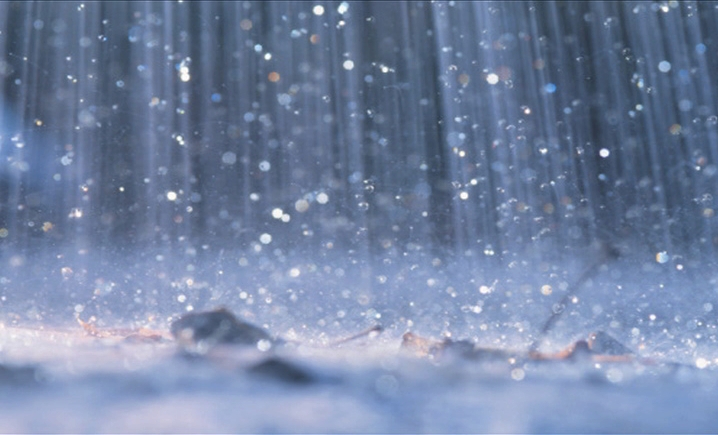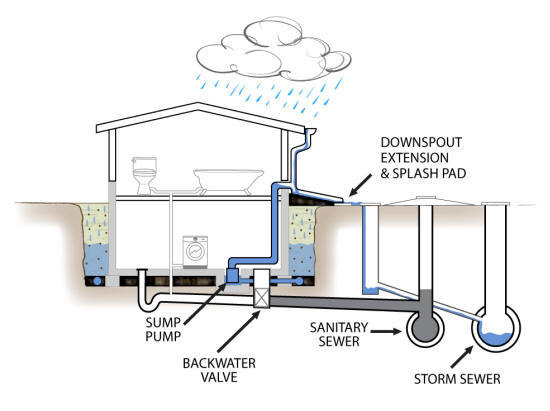Note: This post was originally written in 2015 and has been updated for accuracy and comprehensiveness.
Wintertime is the typical rainy season in California. Did you know the rain often brings challenges for homeowners and commercial property owners along with it? From backups to flooding and a whole host of other problems, the rainy season will likely provide many challenges to homeowners in the coming months. Now is a good time to prepare your property to avoid expensive and aggravating rain issues.

When Exactly is the Rainy Season in California?
The rainy season generally begins in October and lasts until February. The heaviest storms, however, generally don’t begin until December, and the Bay Area has experienced years when heavy storms hit in March and April.
What Causes Sewer or Storm Drain Problems During the Rainy Season?
Dry summers and autumns may cause plumbing issues that only become apparent during the rainy season. For instance, draughts often drive tree root systems deeper into the ground, where they may harm your sewer pipes and drains.
Clogged sewer pipes will also become a problem when heavy rains lead to increases in ground water, which then seeps through cracks in pipes, resulting in backups in your plumbing and/or incorrect water flow to the sewer main. Those backups can lead to flooding in homes and offices, as well as in the surrounding landscaping and driveways.
What Property Risks Are Associated with the Rainy Season?
Although a rainy season might seem like a welcome addition after a dry year with plenty of wild fires throughout the state, the rainy season can often bring plenty of problems with it. The main risk: flooding.
Flooding can be especially common during the rainy season, including in the Bay Area. Flash flooding can be incredibly damaging to residential and commercial properties if not handled correctly. It can also be very dangerous; flooding has been the cause of numerous deaths, leading to the National Weather Service’s Turn Around Don’t Drown campaign.
Mudslides are another potential risk, especially for local Oakland, Berkeley and Kensington properties and locations near or within the hillsides. Heavy rain on these locations can cause mud, rocks and debris to quickly accelerate downhill, potentially damaging nearby properties.
Strategies for Maintaining Your Utilities Before the Rains Start
Excessive rain may lead to flooding, sewer backups, overflowing storm drains, and faulty sewer lines, making for a tough season. As homeowners and property managers prepare and react to these issues, a number of unknown issues and opportunities may present themselves.
We have helped customers through many unexpected scenarios in the Bay Area. Here are some examples of what you can do today to prepare for and survive the rains:
1) Schedule a Sewer Line Inspection
A sewer line inspection will reveal potential drainage problems from cracks, roots, and debris, and help you avoid dealing with raw sewage and damage from flooding. Camera inspections are the best strategy for accurately identifying (and fixing) drain pipe problems.
A sewer inspection can help to determine if your sewer pipes have storm drains connected. In the East Bay, storm drains are not allowed to be connected to the sewer system and will need to be disconnected and routed elsewhere. Sewer line inspections can also identify if there are various types of blockages. There are many things that could cause a blockage: roots, sanitary products, grease buildup, etc. To learn more about keeping your sewer line free of blockages, visit our What Not to Flush FAQs page.

2) Clear Your Gutters, Sewer Lines and Storm Drains Before the Rains Come
It may not be your favorite household chore, but it’s important to clear debris (leaves, twigs, etc.) from your gutters, downspouts, and other outdoor pipes. This debris creates blockages and doesn’t allow pipes to drain properly. Bad drainage allows rainwater to become backed up, which can cause damage inside and outside your house.
If your property has any drains (foundation drain, yard, driveway etc.), sump pump, or any other drainage system, inspect the system for potential blockages. Ponding and standing water are common red flags for drainage problems.
Although they are not directly on your property, check for blockages in nearby storm drains. Leaves, branches, and other debris are common culprits for blocking storm drains. This debris prevents proper drainage, with the potential to create problems on your property. Depending on your location, you should consider keeping storm drains clear yourself or contacting your local public works department to address any issues.
3) Divert Your Storm Drain (*Check with Your City)
In the event of flooding due to a storm drain backup, did you know most localities allow you to divert the water to a designated location on your property such as a garden or lawn area? This can be a good strategy for avoiding extensive property damage, but you must ensure that the diverted water does not drain onto your neighbor’s property.
However, some city jurisdictions will not allow for any draining onto the property at all. Cities such as Albany mandate all storm water be directed to the street area. Please be sure to check with your local government to ensure lawful storm drain diversions.
4) Be Proactive
Whenever possible, it’s best to be proactive – not reactive – to solve problems associated with the rainy season ahead of time. Making sure your home is prepared before the rains hit the Bay Area can help prevent problems associated with the rainy season and will give you peace of mind.
Contact the Experts
For individual help addressing sewage needs and preparing your property for CA’s heavy rains, contact the experts at Pipe Spy.
